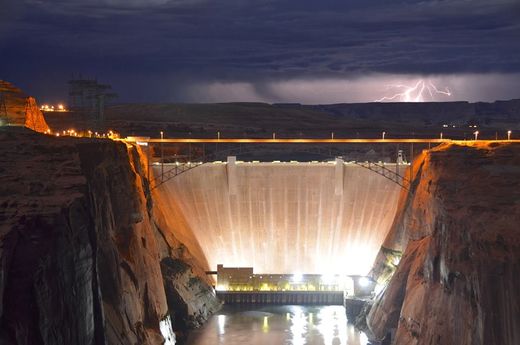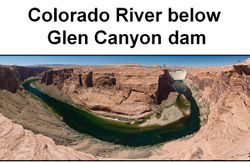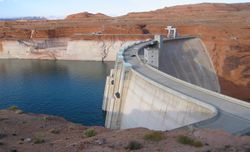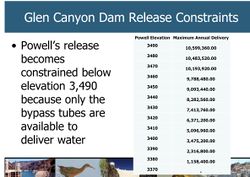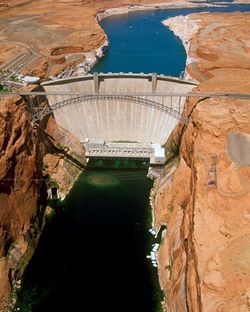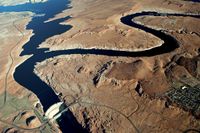Difference between revisions of "GCDAMP Glen Canyon Dam"
From Glen Canyon Dam AMP
(add dam stat) |
(add GCD -Lake Powell Overview- PIC) |
||
| Line 2: | Line 2: | ||
---- | ---- | ||
| − | [[File:Glen Canyon Dam- Down River- USGS.jpg|250px]]|[[File:Lake Powell- side view- PIC.jpg|250px]]|[[File:GCD Release constraints- PIC.jpg|250px]]|[[File:PIC- GCD- from helicopter.jpg |250px]] | + | [[File:Glen Canyon Dam- Down River- USGS.jpg|250px]]|[[File:Lake Powell- side view- PIC.jpg|250px]]|[[File:GCD Release constraints- PIC.jpg|250px]]|[[File:PIC- GCD- from helicopter.jpg |250px]][[File:GCD -Lake Powell Overview- PIC.jpg |200px]] |
Revision as of 10:00, 24 November 2014
- JAWRA_ Loss Rates from Lake Powell and their impact on management of the Colorado River_Tom Myers_feb 20, 2013
- Estimated that more than 14.8 billion cubic meters has been stored in the banks, with a 90% probablility that the value is actually between 11.8 and 18.5 (Gm 3)
- The Colorado River has 73.4 billion cubic meters of available storage in its 10 largest reservoirs (USBR, 2011), which is approximately four times the river's average annual flow.
- Lake Powell loses water from the river system in two ways: to evaporation from the free water surface and bank seepage.
- Bank Seepage is flow to the banks that does not return to the river system whereas bank storage may return to the reservoir or river system.
- Head water snow melt: 96% of Colorado River water comes from above Lake Mead.
- 4% tributary input from Lake Mead to Mexico. (2013 MSCP CTR meeting- TMurphy)
- Q What is the total release (CFS) possible from Glen Canyon Dam?
- A Total release during a HFE = Capacity + 15,000 cfs bypass--> Capacity depends on how many of the 8 units are available.
- Glen Canyon Dam is a 71-story dam

